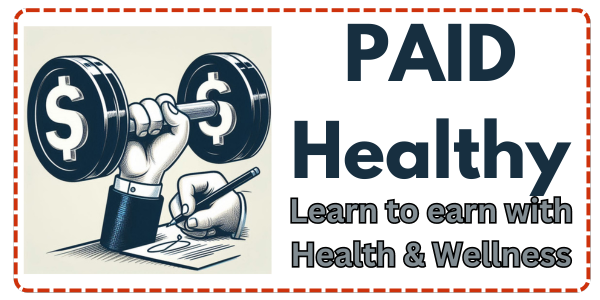Starting A Health Blog: Step-by-Step Guide For Beginners
I’m going to let you in on a little secret – the world of health blogging is as fascinating as it is influential.
“In a sea of digital content, health blogs shine as beacons of information and support for readers worldwide. They cater to a variety of needs, from medical advice to wellness tips, and everything in between.”
You’re going to find out about the ins and outs of starting your health blog. This isn’t just about throwing tips at the wall and seeing what sticks; it’s about equipping you with a solid foundation to share credible, life-enhancing information with an audience that seeks to improve their well-being.

When you envision your readers, who springs to mind? Identifying your target audience is crucial. You must understand their queries, struggles, and aspirations to create a blog that resonates with them. This is the first step towards establishing a trustworthy space in the vast online health community.
Now, I’m here to help you navigate this process responsibly. Trust is a pivotal aspect of the health industry, and being a source of reliable information is non-negotiable. That’s why a strong start for a health blog is synonymous with a commitment to truthful, evidence-based content – laying the groundwork for what’s to come.
Choosing A Niche: The Foundation of Your Health Blog
I’m going to level with you: A successful health blog begins with a laser-focused niche. Your niche isn’t just a topic area; it’s the compass that guides every piece of content you create. It’s what sets you apart in the vast sea of health-related information on the internet.

In my opinion, choosing the right niche is both an art and a science. You want to select a field that you’re genuinely passionate about, yet it should also have a sizable audience looking for answers and advice. Whether you’re drawn to holistic health, fitness routines, dietary advice, mental wellness, or chronic disease management, there’s a niche audience waiting for your expertise.
Here are a few things to keep in nature when locking down your niche:
- Assess your expertise and credentials: Are you a certified nutritionist? A yoga instructor? Use your certifications to establish credibility.
- Analyze the competition: Examine what’s already out there. Look for gaps in the market that you can fill with your unique perspective.
- Identify your audience’s pain points: Choose something that resonates with you and addresses the issues your readers are facing.
- Future-proof your niche choice: Pick a niche that has long-term viability, ensuring your blog isn’t based on a fleeting trend.
This crucial step isn’t only about honing in on an area of health; you’re also laying the groundwork for future content that’s both impactful and authoritative. Select your niche with intention, and you’re already steps ahead in the marathon that is health blogging.
Planning Your Content: Strategizing for Success
I’m going to share with you how a well-thought-out content plan can set your health blog up for incredible success. Planning isn’t just about keeping your blog updated; it’s about creating a roadmap for delivering high-value information that resonates with your audience and establishes your blog’s reputation.
Start with a content calendar. This isn’t just about marking dates on a calendar, it’s also about forecasting the kind of topics that will engage your readers throughout the year. Think of seasonal health concerns, awareness months, or emerging health trends that align with your niche. You’re going to find out how being timely and relevant gives you a strong competitive edge.
Research and analyze popular health topics, but with a twist. Don’t just follow the herd. Identifying gaps in information can help you provide unique insights or present common knowledge from a fresh angle. I’ll help you understand that quality research is the backbone of any authoritative article, especially in a field as crucial as health.
Your content planning should radiate with the principles of E-E-A-T. Demonstrating Experience, Expertism, Authoritativeness, and Trustworthiness shapes not only how readers perceive your content, but how search engines rank it. You’ll factor in these elements by creating content that shows hands-on knowledge, cites authoritative sources, and provides useful, credible information.

Setting Up Your Health Blog: Technical Checkpoints
Setting up your health blog is where things really start to take shape. You’re about to turn your vision into an online space where others can learn, interact, and benefit from your content. This isn’t just about picking a domain name; it’s also about making some critical decisions that will impact your blog’s functionality and user experience.
First off, I’m going to talk about selecting a reliable hosting platform. It’s like choosing a home for your blog on the internet. You want a host that’s not only dependable but also offers the bandwidth and uptime that a budding health resource demands. I’m here to help you with figuring out hosting options like Shared, VPS, and Managed WordPress hosting while ensuring you understand terms like SSL certificates, which are crucial for security.
Next, you’re going to find out about content management systems, or CMSs. Choosing the right CMS can make your blogging life a breeze or a headache. WordPress is the heavyweight champion here, but other platforms like Squarespace and Wix are also worth considering. I’ll guide you through the pros and cons so you can choose something that resonates with you.
Lastly, it’s critical to weave in those UI/UX threads, ensuring your blog is not only informative but user-friendly too. Think clean layout, easy navigation, and mobile responsiveness—these are non-negotiables. You’ll learn about the importance of integrating features like a search bar, categories, and a comment section to foster a sense of community around your blog.
With the technical groundwork laid, your next move will be to fill this newly created space with high-quality, actionable content. That means it’s time to embark on writing your first posts, which isn’t just about putting words on a page—it’s about crafting content that your readers will trust and value. Let’s advance your journey by diving into the practical aspects of creating compelling health content in the upcoming sections.
Writing Your First Posts: Crafting Valuable Health Content

I’m here to help you with your first leap into writing health blog posts. This isn’t just about filling your blog with content; it’s also about offering genuine value to your audience. Choose something that resonates with you, but also something that holds the potential to inform and empower readers.
Now what does crafting engaging and authoritative health articles entail? First, it’s important to have a clear understanding of the topics you’re covering. Pull from peer-reviewed journals, reputable health news outlets, and professional health associations for the most accurate information.
It’s crucial to stay within the bounds of medical information guidelines. This means always providing disclaimers where necessary and being clear about the scope of your expertise, particularly if you’re not a healthcare professional. Your readers are placing their trust in you, so respect that by being transparent and factual.
Using validated research and sources isn’t just for backing up your statements; it’s also about establishing a reputation as a reliable blogger. Citations and references reflect your dedication to high-quality, trustworthy content. Remember, trust is at the heart of E-E-A-T, and your first post sets the tone for that trust.
Your first attempt doesn’t need to be your last. In fact, as you grow, your understanding of what your audience seeks from your content will evolve. Don’t worry too much about perfection; focus on producing well-researched, helpful articles that speak to the needs and questions of your community.
As you prepare to publish your initial posts, consider the future. Making connections with health professionals can be incredibly beneficial. This leads us to the next critical point in your journey as a health blogger: Networking with experts.
Making Connections: Networking with Health Professionals
Imagine your health blog not just as a platform for sharing information, but as a thriving community where knowledge is exchanged between experts and readers. That’s what networking can do for you. In this section, I’ll guide you on how to forge meaningful connections with health professionals that will enrich your blog’s credibility and offer your readers expert insights.

First up, you’re going to find out about the importance of cultivating a network of medical practitioners and other health professionals. Featuring expert interviews and guest posts can add a layer of trust and reliability to your content. When readers see that recognized professionals contribute to your blog, it gives them confidence in the information you’re offering.
Let me tell you, building relationships in the health sector isn’t just about email exchanges. It’s also about attending webinars, visiting conferences, and participating in online forums where professionals gather. Make your presence known, be genuinely curious, and always aim to learn.
Now, leveraging these relationships can be game-changing. Seek out professionals who align with your blog’s ethos and invite them to share their knowledge via interviews or guest articles. Provide them with clear guidelines on what your audience values and ensure that their contributions meet the high standards you’ve set for your blog content.
Remember, partnerships with health professionals must always be respectful and mutually beneficial. Acknowledge their expertise, allow them to review their contributions before publishing, and give them credit in your posts. This isn’t just about adding value to your blog; it’s also about building lasting professional relationships.
Navigating Legalities: Ensuring Compliance and Ethics

You’re going to find out about the boring yet critical side of health blogging now. It’s not all about engaging topics and SEO – there’s a legal angle to it as well. First off, you must know about health information privacy laws. If you’re gathering any personal info from your readers, you need to protect their privacy. In the US, that’s where HIPAA compliance comes into play, and while it’s mainly for healthcare providers, it sets a good standard for privacy practices.
When you’re sharing health information, accuracy is king, but so is originality. That’s where copyright laws step in. Make sure anything you publish is your own content or that you have the right to use it. Keep in to your reader but also be honest about where your content is coming from. Also, your blog might use images or quotes, and you need permission for those too, unless they’re royalty-free or in the public domain.
This isn’t just about following the rules; it’s also about maintaining trust with your audience. So let’s talk about transparency, especially with affiliate marketing and sponsorships. If money is changing hands, be upfront about it. Add disclaimers where necessary and make sure your readers know which posts are sponsored, and how you handle affiliate links. This level of honesty won’t just keep you on the right side of the law, it will cement your relationship with your followers.
And remember, as your blog grows, these considerations will only become more central. It’s important to regularly review your legal obligations and update your practices as needed. This proactive approach can help you avoid any pitfalls that could undermine the hard work you’ve put into building your blog.
Promoting Your Blog: Outreach and Marketing Tactics
Once your health blog is buzzing with stellar content, it’s time to get the word out. Promoting your blog is crucial, as even the most valuable insights need a push to reach readers. Don’t worry too much about mastering every marketing technique at once; focus on a few methods to start with and refine your strategy as you learn.
SEO is a powerhouse in the blogging world. Start with basics like keyword research – understand what your audience is searching for and optimize your posts accordingly. Remember, this isn’t just about ranking high; it’s also about ensuring readers find genuinely useful information.
Social media channels are more than just spaces for selfies and food pics – they are platforms where you can engage directly with your audience. Choose platforms that resonate with you and where your audience likely hangs out. Share your posts, ask questions, and join conversations to boost visibility.
Don’t overlook the value of an email list. It’s a direct line to your readers. Offer them something of value in exchange for their email, like a free eBook or a weekly health tip. Then use your list to distribute new posts, share exclusive content, and nurture reader relationships.
Collaborate with other health bloggers or wellness influencers. This can widen your reach and add credibility to your blog. Whether it’s through guest posting or social media shoutouts, collaborations can be a win-win for both parties involved.
Monitoring and Growth: Measuring Your Blog’s Success

I’m going to give you a roadmap for tracking the progress and expansion of your health blog because your first attempt doesn’t need to be your last. You can always adjust your approach down the line, and here’s how.
You’re going to find out about the wonders of analytics tools. They’re not just there to spit out numbers; they interpret the story of your blog’s journey. Using insights provided by these tools, I’ll show you how to repurpose what’s working and revamp what isn’t.
Don’t worry too much about fluctuations in your stats. It’s normal in the beginning. What’s crucial, however, is to spot trends. Choose something that resonates with you from the metrics and let that guide your future content creation.
There’s a lot of opportunity to leverage feedback from your audience. Remember, this isn’t just about what you want to write, but what your readers want to learn. Engage with them, find out their pains and pleasures, and tailor your content accordingly.
Just don’t focus too much on perfection with every post. Focus on improvement. Your growth strategy will evolve as you do, and so too will your blog. Keep learning, keep adapting, and keep your readers at the forefront of your mind and you won’t just grow – you’ll thrive.
Summary of Starting A Health Blog: A Beginners Guide To Profits
I really hope that you’ve picked up some useful strategies for starting and growing your health blog. Remember, it’s about more than traffic and numbers; it’s about making a meaningful impact on your audience’s health journey. Keep your content credible, your advice sound, and your motivations transparent, and you’ll have a health blog that not only succeeds but also empowers and educates. So keep at it, measure your successes, cherish your learning opportunities, and before you know it, you’ll be an authoritative voice in the health blogging community.


My name is Michael and I find the article very informative and helpful. It has greatly assisted me in learning about understanding my audience and related topics. I look forward to progressing through these critical steps in establishing the foundation of my blog!
Keep Up The Good Work!
Not a problem. This is one of 3 blogs in 3 niche markets I have begun to build but it is also a personal journey towards a healthier me. Be sure to bookmark and follow along.
What an awesome resource. I have been thinking about starting a health blog about beating diabetes naturally for some time now. However, I do have a question for you, please; I hope you dont mind. I have been researching the competition, and it appears the SERPS are dominated by big pharma. Is it worth pursuing a natural health blog?
Fact is every industry has heavy hitters who buy their top spots in Google, who sells them willfully. For one they can’t buy all the low hanging fruit, and can be outranked on millions of terms. Google is also not the only game in town and with training and practice any blogger can find unlimited traffic in these NON-Pharma niches.
Wow, thank you for that wonderful, inspiring reply. I am going to do it, as I have been talking about it long enough. Thanks again, and I have bookmarked it so I can read your future articles.
Awesome the following link is a new post to address mostly Google Free ways to build a community around your new blog.